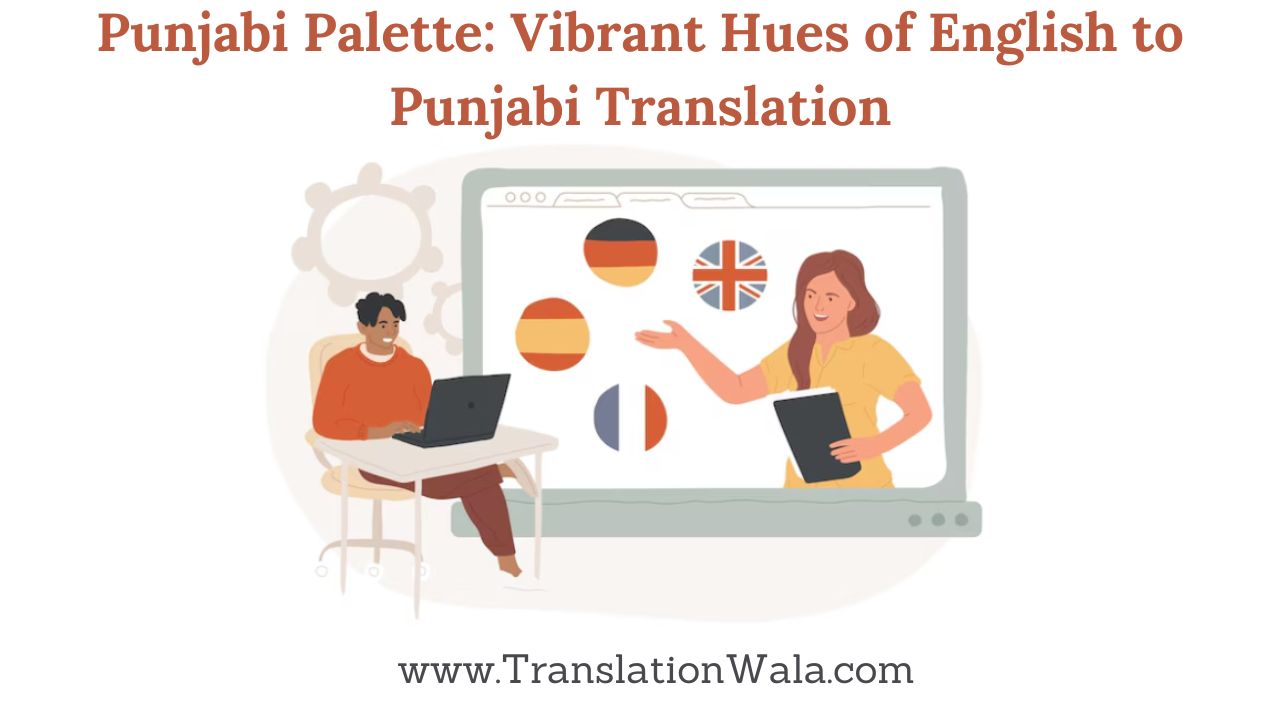English to Punjabi Translation: Many people from different countries can talk to each other through the English language, which has a very large vocabulary and is spoken all over the world. Speaking Punjabi, on the other hand, can make turning the complexities of English into their own language feel like painting a vivid sunset with just one stroke. When translating Punjabi, which is a language with a lot of history and poetry, it’s hard because you have to be very good at the technical parts of the job and also really understand the cultural meanings behind each word.
The Melody of Mother Tongue: The Allure of Punjabi
Punjabi is a lively language that more than 130 million people speak around the world. There are beats on dhol drums and emotional cries in Sufi poems that make up its very heart. English depends a lot on prepositions, but Punjabi depends a lot on word conjugations and postpositions. This natural rhythm is the first thing that translators have to deal with. To get to the heart of a short English line, a string of Punjabi verbs is often needed. Each one adds a layer of stress or an emotional undertone that wasn’t there in the original English.
Think about the simple sentence “I miss you.” It might be possible to translate it literally as “Main tumhe miss karta hoon,” but that doesn’t capture the longing or hunger that comes with missing someone. “Tera viyog satata hai,” which means “Your absence is a constant ache,” is a more subtle version that better catches the emotional depth of the English phrase.
Beyond the Literal: Idioms and Cultural References
The real skill in translation is going beyond what words mean in their direct sense. British English has a lot of words and cultural references that Punjabi does not have a clear translation for. It would make no sense to translate “It’s raining cats and dogs” into Punjabi word for word. In this case, the translation has to look into the culture and find a Punjabi saying that describes a strong rainstorm. The phrase “Aasman phatt gaya” (The sky has broken) might be a better English to Punjabi Translation because it shows how hard it is raining without losing the meaning.
Food for Thought: The Influence of Language on Cuisine
Language has a big effect on society, and not just on daily speech. For example, Punjabi food is very colorful and tasty. Not only are dishes like “Sarson da Saag” and “Makki di Roti” delicious, but their names are also a tribute to the Punjabi language. The traditional meaning of these foods would be lost if they were translated directly.
It might be more interesting to translate as “Mustard Greens Curry” and “Corn Flatbread,” which gets to the heart of the ingredients while still keeping the Punjabi language link. The mark of a good Punjabi translation is finding this balance between being accurate and understanding other cultures.
Also Read: Precision Unleashed: Elevate Content with English to Kannada Translation
The Social Canvas: Translating Gender and Respect
Tradition is very important in Punjabi culture, and the language shows this. Punjabi, unlike English, has built-in ways to show respect and gender. These social quirks are important for a translator to be aware of. While it might be okay to translate “Hello” straight into “Namaste” in some cases, you would need to use a more respectful word like “Sat Sri Akal” when talking to an older person.
The Evolving Palette: Punjabi in the Digital Age
A new era of Punjabi translation has begun with the rise of computers. A unique mix of Punjabi and English has grown thanks to social media and online conversation. This mix is often called “Punjabi Tadka” (Punjabi Flavor). To translate this Hinglish speech, you need to know both English and Chinese, as well as the culture in which they are used.
A good translator can handle this mix of languages, making sure that people can understand each other while still capturing the spirit of Punjabi language.
Conclusion: A Symphony of Languages
Literally English to Punjabi Translation is an art form, not a science. You need to know a lot about both languages, their cultures, and how society is always changing. With the help of an experienced translator, the translation turns into a symphony of languages, with the music of Punjabi weaving its magic into the fabric of English conversation. The bright colors of the Punjabi palette make the world a better place by making sure that the message, not just the words, are heard and valued.
